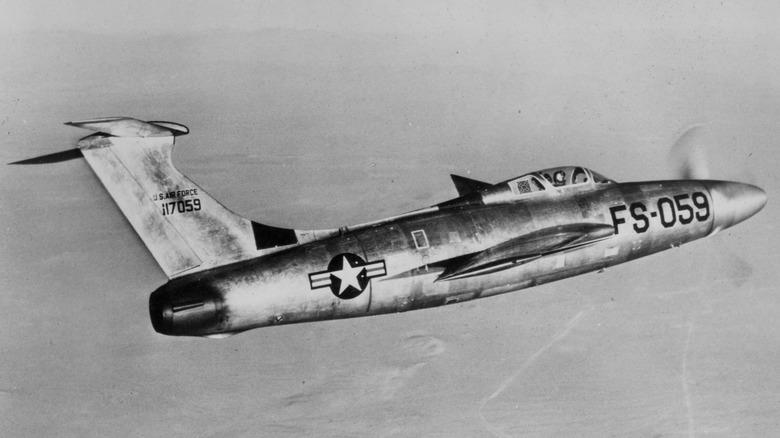This Loud Fighter Jet Caused Seizures on the Ground

The Unforgettable Sonic Boom: The Republic XF-84H "Thunderscreech"
Sonic booms are known for their loud and disruptive nature. In the 1960s, commercial aviation faced restrictions on breaking the sound barrier after tests revealed the potential harm of supersonic travel to those on the ground. This caution was reinforced when the Thunderbirds in Chicago recently caused window-shattering damage with their sonic booms. While a single or two booms can be startling, imagine a plane that creates a constant sonic boom. What kind of destruction could that cause? The U.S. Air Force and Navy accidentally discovered the answer in 1955 with the Republic XF-84H "Thunderscreech."
A Plane That Sucked—Literally
The XF-84H was a unique aircraft that set a record for propeller-driven speed but gained infamy for its problematic design. It featured a massive turboprop motor that caused the plane to constantly barrel-roll and required emergency landings nearly every time it flew. Despite these issues, the plane's propellers reached supersonic speeds, creating a continuous sonic boom. This earned it the unofficial title of the loudest plane ever built.
The Need for Speed
In the mid-1950s, jet engines were becoming popular, with early models like the P-80 and F-84 easily outpacing prop-driven fighters. However, jets consumed a lot of fuel and needed time to reach full speed. For the Navy, this was a problem because aircraft carriers lacked the space for jets to take off without assistance from a catapult. The solution was an interceptor that could fly off the deck unassisted while still matching the performance of a jet fighter. The Air Force also saw potential in the concept as an escort for long-range bombers that were more fuel-efficient than jet counterparts.
The Design and Its Flaws
Republic modified the F-84F Thunderstreak by replacing its jet engine with an Allison XT40 turboprop engine, which produced an impressive 5,850 horsepower. Unlike earlier prop-driven fighters, this engine had a fixed speed, rotating the propeller at 2,100 rpm from start to finish. Pilots adjusted the propeller's pitch to control thrust, which helped with acceleration but created significant torque that made the entire airframe want to rotate around the propshaft, leading to nonstop barrel rolls.
The Sounds That Made Heads Spin
The Allison engine's high-speed rotation pushed the propeller tips past the sound barrier, generating a constant sonic boom. On the ground, the noise could be heard over 20 miles away. Inside the cockpit, the experience was no better. Test pilot Lin Hendrix reportedly said, "You aren't big enough and there aren't enough of you to get me in that thing again" after his first flight. Another pilot, Henry Beaird, completed only 10 of 11 flights due to severe vibrations that forced early landings.
The End of a Troubled Project
Despite its ambitious design, the XF-84H failed to gain support. The project ended in October 1956 after its final test flight. The prototypes reached a top speed of 520 mph, far below the projected 670 mph. The plane was eventually outpaced by the Tupolev TU-95, a Russian bomber that can reach 575 mph without causing crew discomfort.
Legacy of the Thunderscreech
The XF-84H remains a cautionary tale of innovation gone wrong. Its legacy is one of loud noises, mechanical failures, and a lesson in the challenges of pushing the limits of technology. While it never entered mass production, it stands as a reminder of the complexities involved in aviation engineering.
Post a Comment for "This Loud Fighter Jet Caused Seizures on the Ground"
Post a Comment